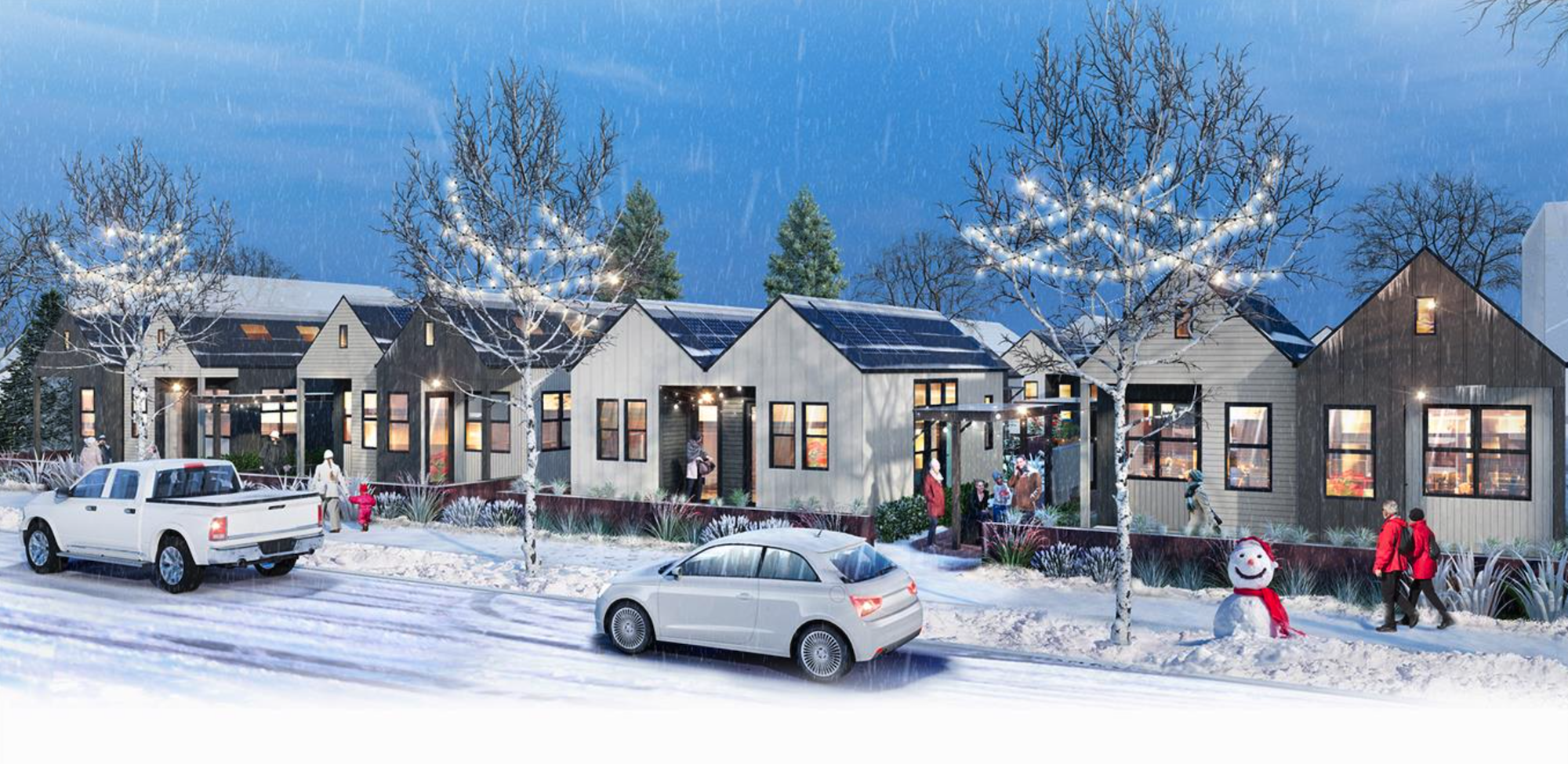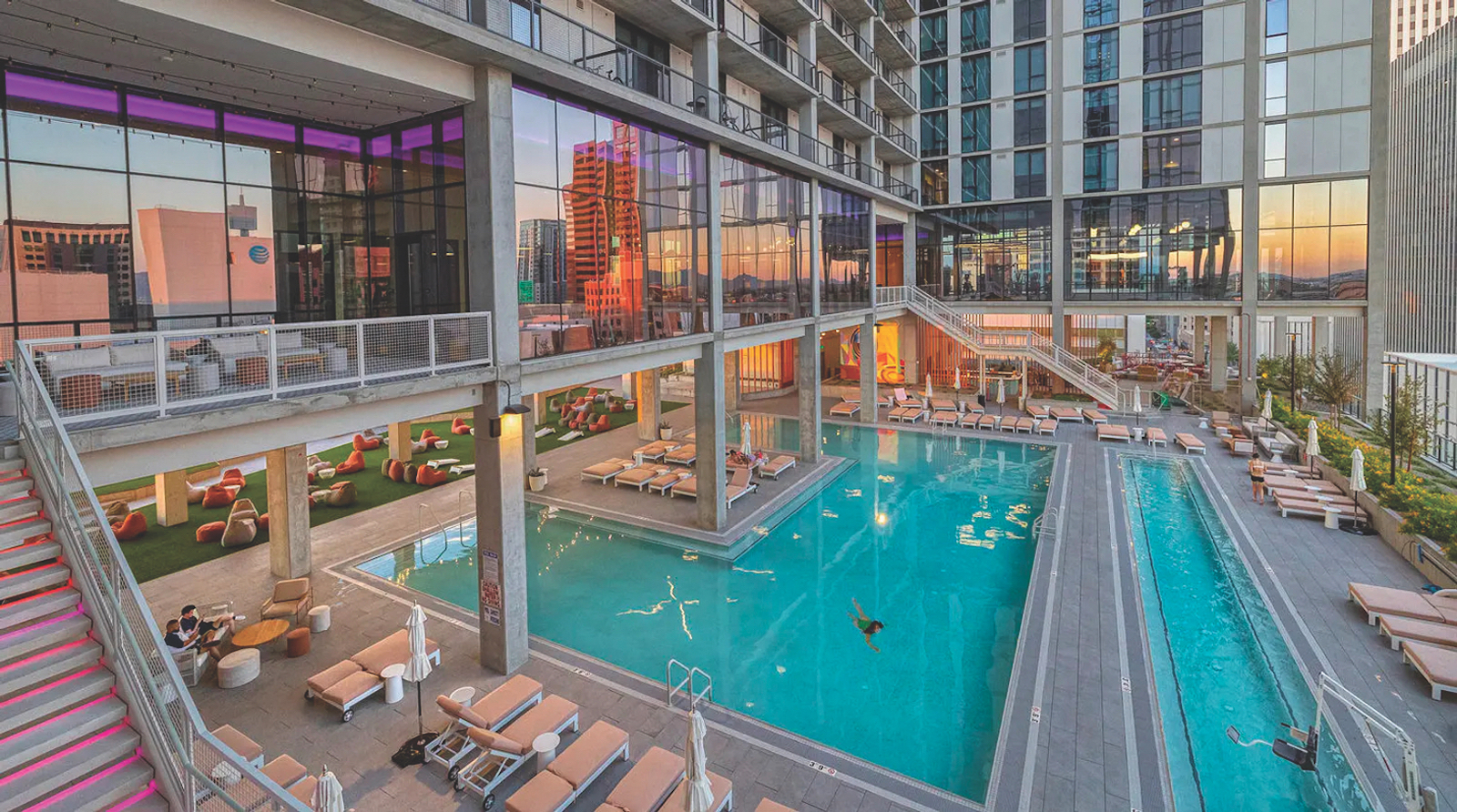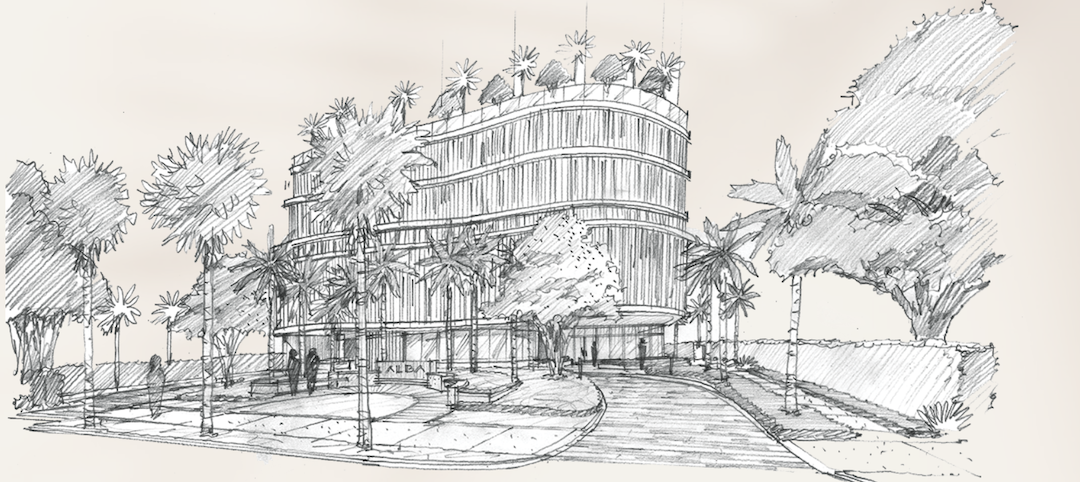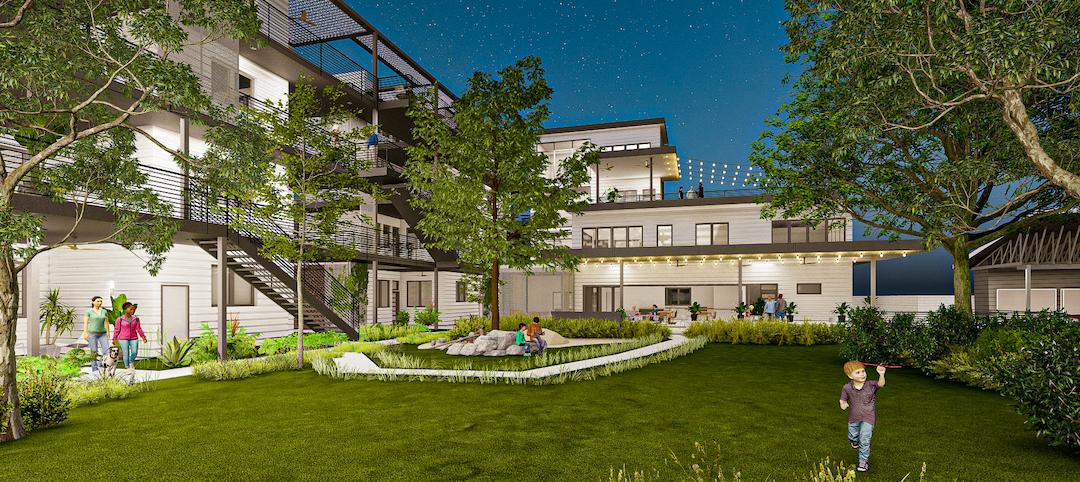The booming multifamily sector shows no signs of a significant slowdown heading into 2023. Here is a round up of Giants 400 firms that are driving innovation in this sector:
Clayco and architecture firm FitzGerald completed the 20-story, 330-unit X Phoenix development, a mixed-use residential high-rise in downtown Phoenix that contains, among other rental units, dedicated space for co-living. This shared apartment model is designed to cater to working professionals seeking convenience, community, and modern shared amenity space at more attainable prices in expensive rental markets. The development also includes an indoor bike mezzanine, 105,500-gallon pool, five-story parking garage, and 50,000 sf of shell space that will include a commercial restaurant.
Dahlin Group developed a tiny home prototype, Mod Hive, to help address the affordable housing shortage in Salt Lake City. The prototype works as a small cluster on one lot or a small, planned development consisting of multiple lots. The concept involves an inward-looking site plan that creates a tiny village with space for a community garden, outdoor gathering space, and barbecue/firepit. It replicates the feel of a traditional neighborhood of two-story, single-family detached homes by employing a lower-density configuration at the front of the lot, with higher densities at the rear.

For another tiny house project, Dahlin collaborated with HomeAid Northern California and Firm Foundation Community Housing to design cost-effective tiny home villages sited on church properties, targeted at individuals facing homelessness. This partnership completed its pilot project in February 2020 with additional projects under development in 2021. In the San Francisco Bay Area, affordable multifamily developers expect to spend $700,000 to $1 million per single one-bedroom unit; the pilot village came in at $150,000-$170,000 per unit, with an entitlement process of just 12-18 months.
Dattner Architects had four Passive House projects progress through construction stages in 2021, with Santaella Gardens completed in late 2021 and receiving Passive House Certification in early 2022. These projects provide replicable models for Passive House applications to multifamily affordable housing. Santaella Gardens provides much needed workforce and affordable housing in the Bronx. Its super-insulated, airtight building envelope includes thermally broken, high-performance windows and advanced air sealing details to eliminate condensation and air exfiltration. Rooftop solar photovoltaic panels generate onsite renewable energy, with a capacity of 162.7 kW. The building has a projected energy use intensity of 20.40 kBTU/sqft/yr.
The Hall Arts Residences in the Dallas Arts District joins HKS’s growing portfolio of projects focused on creating superior spaces for the health and well-being of building occupants. The project is the first residential project in Texas to register for WELL Multifamily Certification.
Morrison Hershfield contributed to the launch of the Embodied Carbon Pathfinder, a free app for quickly estimating cradle-to-grave whole-building life cycle assessment results for multifamily buildings. The tool uses thousands of data points that allow users to find “pathways” through design choices to land on a target embodied carbon result. The project is a collaboration with OPEN Technologies and the Athena Institute.
Related Stories
Codes and Standards | Feb 21, 2022
More bad news on sea level rise for U.S. coastal areas
A new government report predicts sea levels in the U.S. of 10 to 12 inches higher by 2050, with some major cities on the East and Gulf coasts experiencing damaging floods even on sunny days.
Urban Planning | Feb 14, 2022
5 steps to remake suburbs into green communities where people want to live, work, and play
Stantec's John Bachmann offers proven tactic for retrofitting communities for success in the post-COVID era.
Senior Living Design | Feb 11, 2022
Design for senior living: A chat with Rocky Berg, AIA
Rob Cassidy, Editor of MULTIFAMILY Design + Construction, chats with Rocky Berg, AIA, Principal with Dallas architecture firm three, about how to design senior living communities to meet the needs of the owner, seniors, their families, and staff.
Multifamily Housing | Feb 8, 2022
Suffolk to build Alba Palm Beach
The project will feature 55 residences.
| Feb 4, 2022
New apartment complex Dixon Place honors the history of Salt Lake City
Salt Lake City’s Sugar House neighborhood has been experiencing somewhat of a renaissance as of late, and the opening of new apartment community Dixon Place continues that trend. MVE + Partners took leadership in the design of the 59-unit, Class A development.
Sponsored | Steel Buildings | Jan 25, 2022
Multifamily + Hospitality: Benefits of building in long-span composite floor systems
Long-span composite floor systems provide unique advantages in the construction of multi-family and hospitality facilities. This introductory course explains what composite deck is, how it works, what typical composite deck profiles look like and provides guidelines for using composite floor systems. This is a nano unit course.
Multifamily Housing | Jan 20, 2022
Texas’ first cohousing residential community breaks ground in East End Houston
The design will include sustainability elements.
Coronavirus | Jan 20, 2022
Advances and challenges in improving indoor air quality in commercial buildings
Michael Dreidger, CEO of IAQ tech startup Airsset speaks with BD+C's John Caulfield about how building owners and property managers can improve their buildings' air quality.
Multifamily Housing | Jan 13, 2022
Astra Tower will be Salt Lake City’s tallest high-rise
HKS designed the project.
3D Printing | Jan 12, 2022
Using 3D-printed molds to create unitized window forms
COOKFOX designer Pam Campbell and Gate Precast's Mo Wright discuss the use of 3D-printed molds from Oak Ridge National Lab to create unitized window panels for One South First, a residential-commercial high-rise in Brooklyn, N.Y.


















